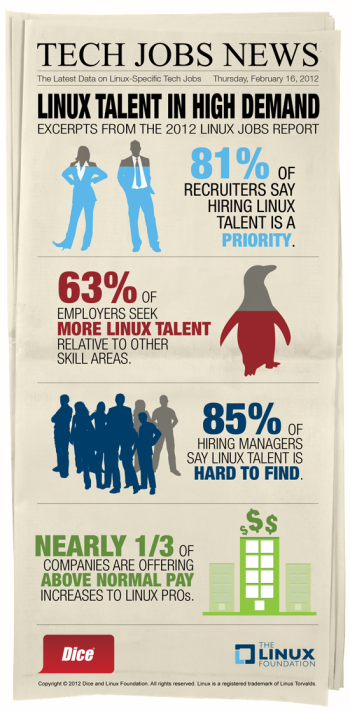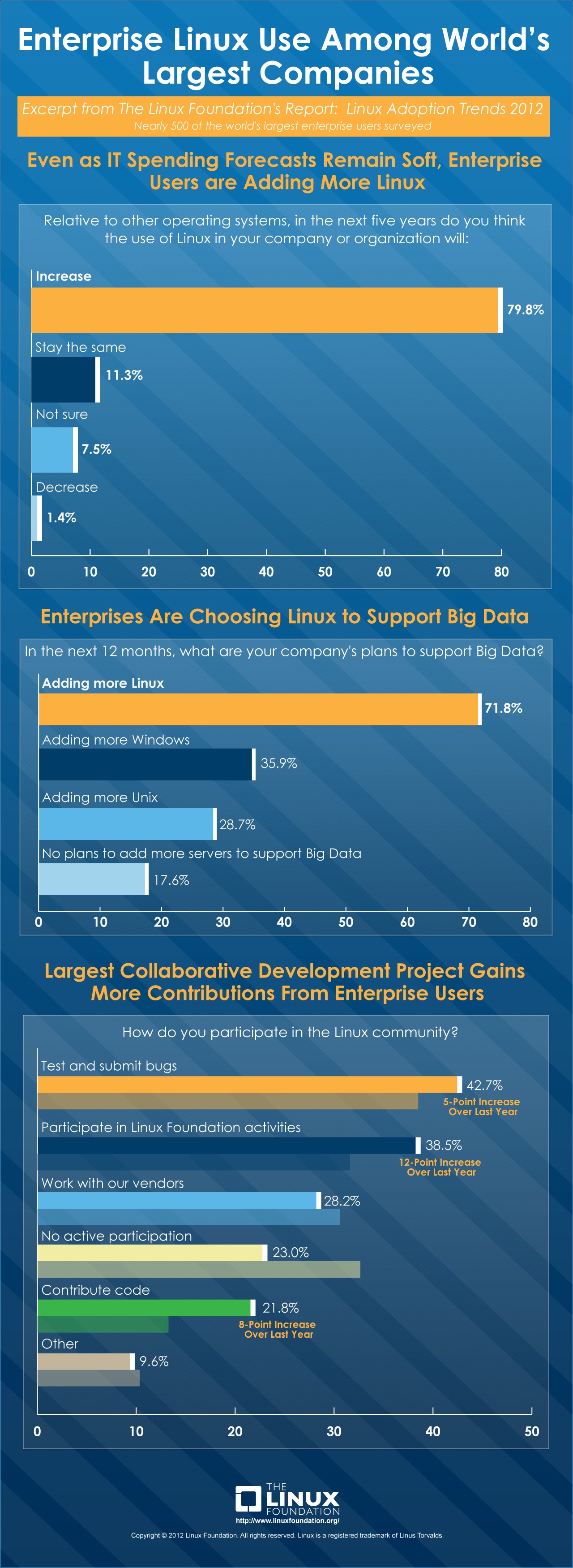From a post By Katherine Noyes, PCWorld
Check out the full post for links to related articles and a wealth of other information.
Numerous studies have emerged over the past few years indicating that Linux skills are a hot item in the IT hiring market, but on Tuesday the Linux Foundation will publish a brand-new report suggesting that the search for such talent is taking on a new level of urgency.
To wit: While 81 percent of hiring managers recently surveyed said that hiring Linux talent is a priority in the year ahead–63 percent, in fact, say they will hire Linux talent over other skill areas–a full 85 percent of those hiring managers said that finding Linux professionals is difficult.
Their solution? When they can find Linux talent, companies are increasingly paying bigger salaries and bonuses to those people. In fact, Linux salaries are growing at more than double the rate of other tech salaries–which themselves are on the rise–and bonuses are increasing as well.
It’s a good time to be working with Linux, in other words.
‘Some of the Hottest Jobs in Tech’
The 2012 Linux Jobs Report, co-produced by careers site Dice.com and The Linux Foundation, reflects the results of a December survey of more than 2,300 hiring managers around the world, nearly half of whom reported that they expect to add more Linux professionals to their firms in early 2012.
While tech professionals on the whole saw an average pay increase of just two percent in 2011, professionals with Linux skills have seen a five percent increase in salaries and a 15 percent jump in bonus payouts over the same timeframe, the study found.
Flexible work schedules and additional training and certification programs were among the other perks managers reported giving Linux gurus.
Mid-level professionals with three to five years of experience were targeted by 75 percent of respondents as the most sought-after hires, particularly when they have development or systems administration skills.
The infographic on the right summarizes some of the study’s key findings.
“Linux jobs have become some of the hottest jobs in all of tech,” said Jim Zemlin, executive director at The Linux Foundation. “Clearly, hiring managers throughout the IT tech sector understand this and are aggressively seeking Linux professionals.”
‘Simply a Core Skill’
Indeed, no other tech skill has matched Linux in demand growth over the past 10 years, noted Alice Hill, managing director with Dice.com.
“The best Linux candidates have options, and we need more talented professionals to join the community,” she added. “Linux is simply a core skill for anyone pursuing a career in software development or systems administration.”
As of Tuesday, the new report can be downloaded from the Linux Foundation’s site.
In the meantime, how are your Linux skills coming along? Don’t forget there are lots of ways to bolster those skills online.



